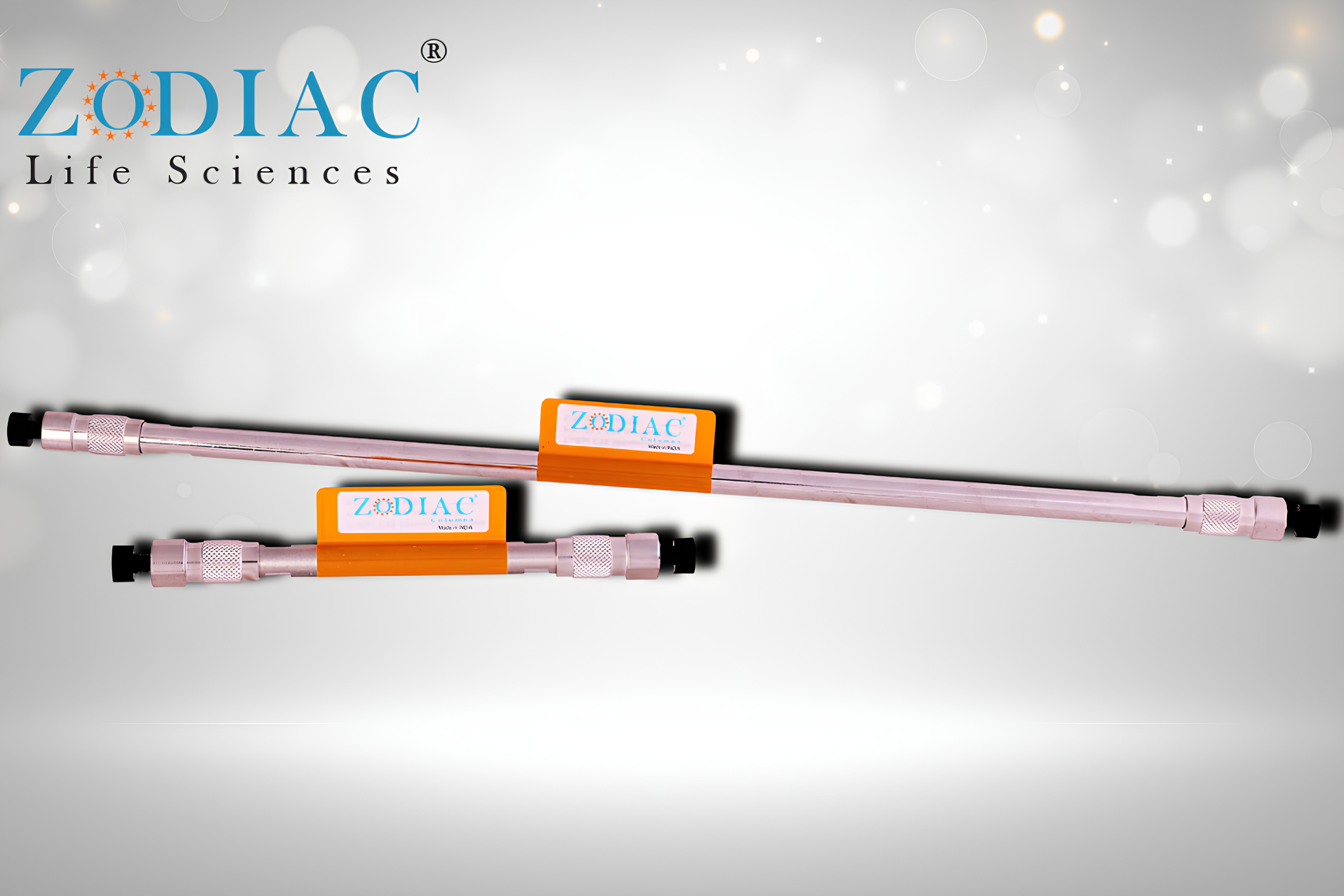HPLC Columns are the cornerstone of High-Performance Liquid Chromatography (HPLC)—a method widely used across pharmaceutical, biotech, food safety, and environmental labs for precise and efficient separation of chemical compounds. From method development to quality control, choosing the right HPLC column is essential for reproducibility and reliability in results.
🔬 What Are HPLC Columns?
An HPLC column is a tube filled with a stationary phase that interacts with analytes as the mobile phase flows through, leading to separation based on properties like polarity, size, or functional groups. The choice of column chemistry and dimensions directly impacts performance.
At Zodiac Life Sciences, we manufacture and supply high-performance columns including:
- ✅ C18 Column – The industry standard for reversed-phase chromatography; excellent for non-polar compounds.
- ✅ C8 Column – Slightly less retentive than C18, ideal for moderately non-polar compounds.
- ✅ Phenyl Column – Designed for aromatic compounds using π-π interaction.
- ✅ Silica Column – Used in normal-phase chromatography for non-polar compounds.
- ✅ PFP Column – Pentafluorophenyl columns offer unique selectivity for halogenated or polar compounds.
- ✅ Amino Column – Excellent for carbohydrates, sugars, and other polar analytes.
- ✅ Cyano Column – Versatile columns for polar compounds; can function in both normal and reversed-phase modes.

🧪 HPLC Column Uses: Versatility Across Industries
The versatility of HPLC columns makes them essential for:
- Pharmaceuticals: Analyzing drug content, impurities, and degradation products.
- Food & Beverages: Monitoring preservatives, sweeteners, and nutritional content.
- Environmental Labs: Detecting pesticides and pollutants.
- Biotech & Research: Characterizing proteins, peptides, and nucleotides.
Whether it’s a C18 column for general use or a Phenyl column for aromatic interactions, understanding HPLC column uses helps tailor solutions for every analysis.
🛡️ Protect Your Investment with an HPLC Column Guard
An HPLC column guard is a mini-cartridge placed before the analytical column to protect it from contaminants, particles, and matrix interference. This not only extends the column’s life but also ensures consistent separation performance—especially when using expensive columns like PFP, Amino, or Cyano columns.
📏 HPLC Column Length: Why It Matters
HPLC column length plays a critical role in balancing resolution, run time, and backpressure:
- Short Columns (50–100 mm): Ideal for rapid separations.
- Medium-Length (150 mm): Provide good resolution for general applications.
- Long Columns (250 mm): Best for complex mixtures needing high separation efficiency.
Choosing the optimal HPLC column length ensures both time and solvent efficiency without compromising resolution.
💰 HPLC Column Prize: What Should You Expect?
The HPLC column prize (or HPLC columns prize) varies based on specifications:
- Standard C18/C8 Columns: ₹15,000–₹35,000
- Specialty Columns (Phenyl, PFP, Amino, Cyano): ₹30,000–₹60,000+
- HPLC Column Guards: ₹3,000–₹7,000 depending on size and compatibility
Zodiac Life Sciences offers premium HPLC columns at competitive prices, ensuring both affordability and performance.
🧪 Trusted HPLC Columns Manufacturer – Zodiac Life Sciences
As a leading HPLC columns manufacturer, Zodiac Life Sciences provides:
- A complete range of bonded phase columns (C18, C8, PFP, Phenyl, Amino, Cyano, Silica)
- Custom column dimensions, particle sizes, and packing options
- Affordable HPLC column prizes without compromising on quality
- Expert support for column selection, method development, and troubleshooting
✅ Conclusion
Choosing the right HPLC columns is essential for method success in chromatography. Whether you’re looking for a C18 column for routine assays, a Cyano column for polar selectivity, or a PFP column for specialty separations, consider key factors like HPLC column use, length, guard protection, and budget.
Partner with Zodiac Life Sciences for high-performance HPLC columns, expert guidance, and cost-effective solutions for all your chromatographic needs.
